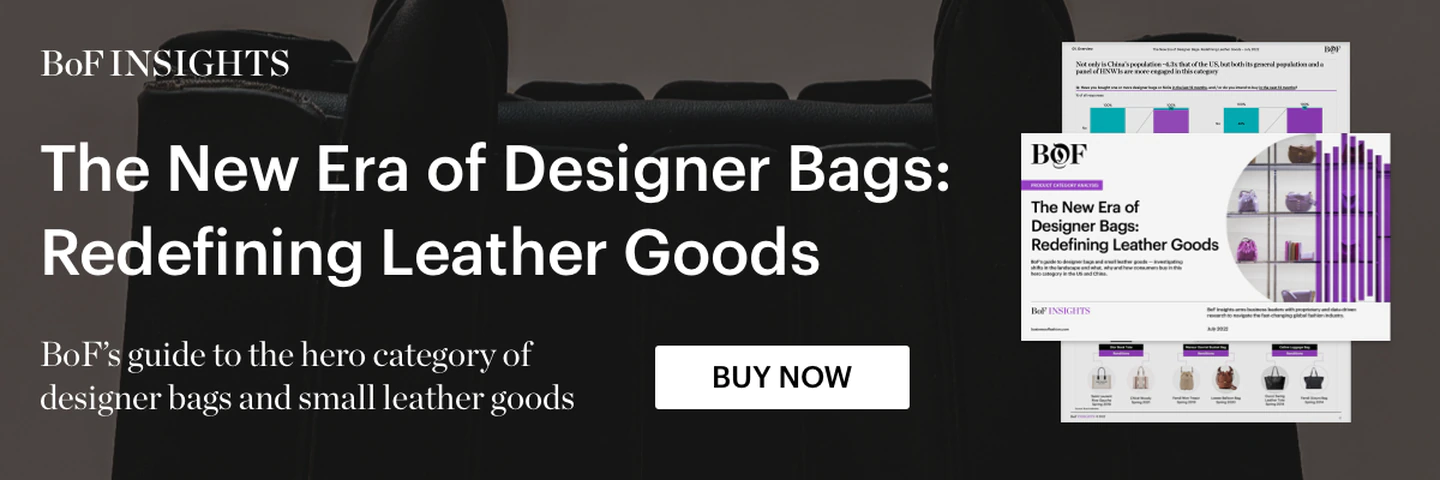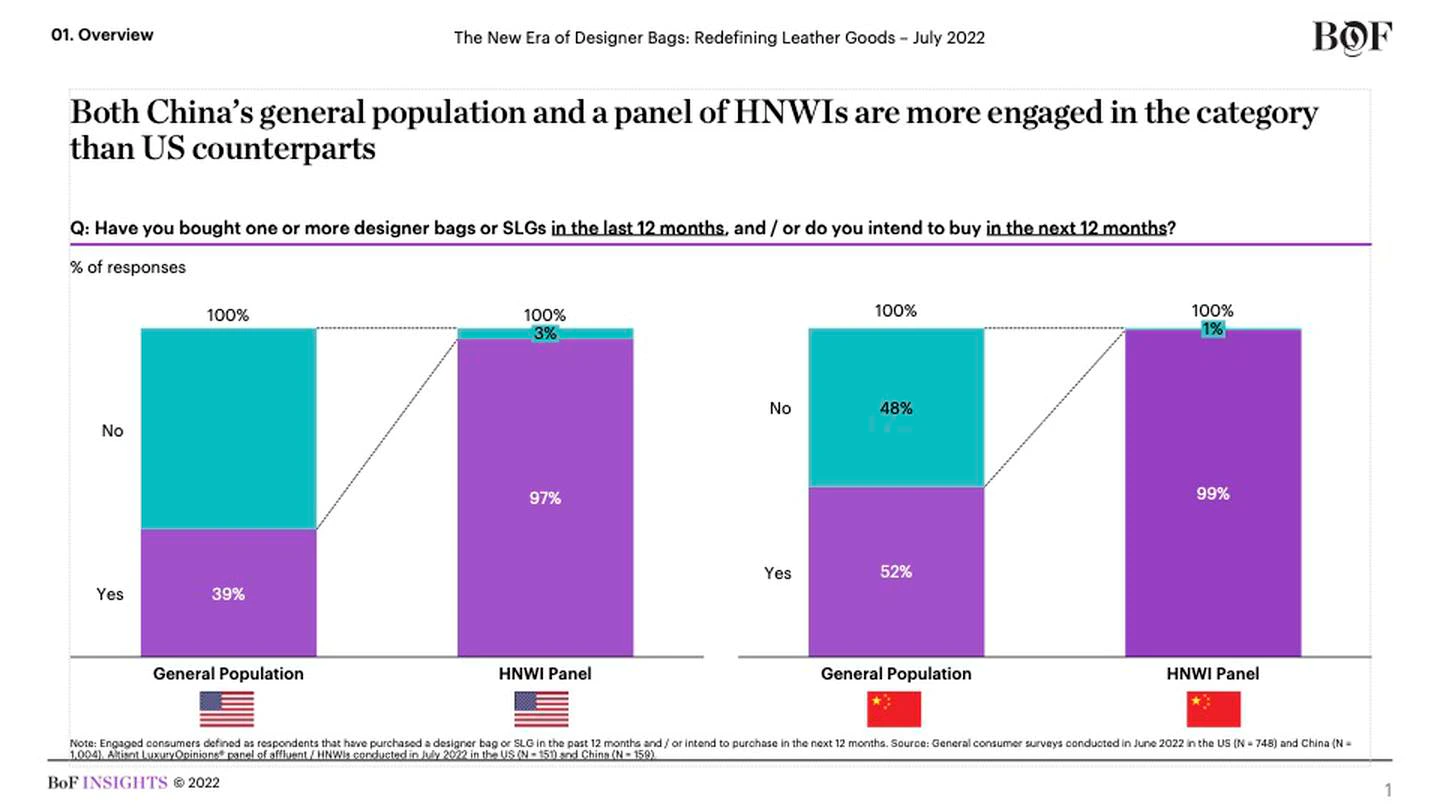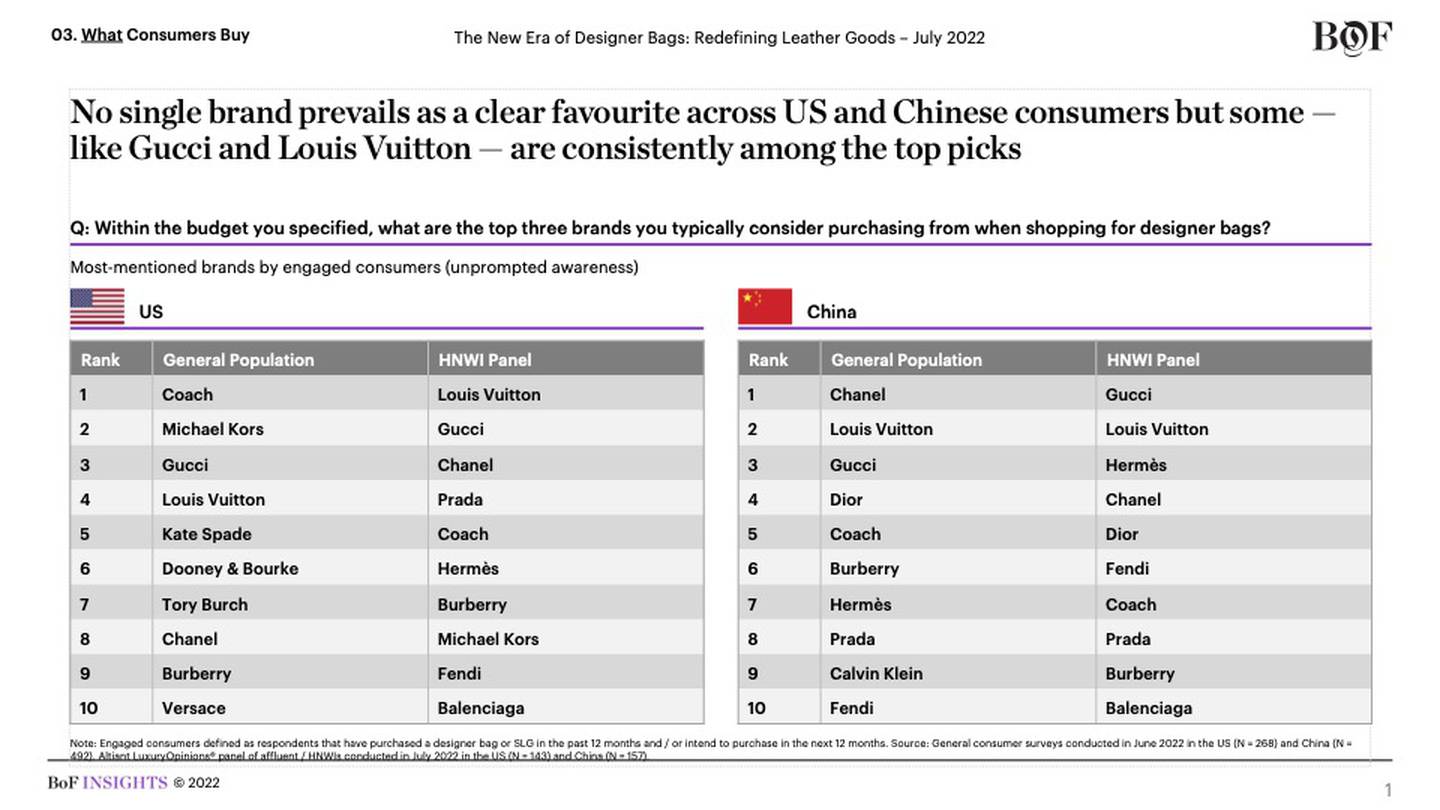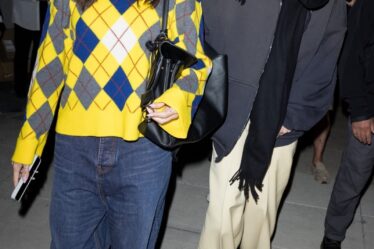
Designer bags and small leather goods (SLGs) show no signs of relinquishing their role as a mainstay of luxury houses. The category, at $72 billion today, is expected to grow to $100 billion by 2027 despite lingering pandemic effects and today’s rising economic pressures, according to The New Era of Designer Bags: Redefining Leather Goods, the latest report from BoF Insights.
Most of this growth will take place in the world’s two largest markets for designer bags and SLGs: the US and China. Proprietary research from BoF Insights finds that even as shopping behaviours shift and tastes evolve, consumers in both countries remain loyal to the category that provides functionality, style and, in many cases, a highly valued status symbols. Among the general population surveyed in June 2022, around 40 percent in the US and 50 percent in China are “engaged” consumers in the category, having purchased designer bags or SLGs in the last year or intending to purchase in the next year. In both countries, nearly all high-net-worth individuals (HNWIs) — with investable assets worth a median value of between $1.5 million and $2 million — are engaged in the category.

For brands, the market for designer bags and SLGs is increasingly crowded. To stay relevant, designer brands aim to “own” a specific style, be it in terms of silhouettes, materials or colourways, often requiring a balancing act between classic and novel features across a portfolio. Even so, imitation is rife in the category and once a brand designs what becomes an “It” bag, rivals often aim to go to market with their own versions of that design, creating pressure to be in a cycle of constant innovation.
Heritage brands are often now competing head to head with contemporary brands that have identified and moved swiftly into gaps in the market. For both incumbents and newcomers, collections now need to speak to an expanded definition of “luxury,” which taps into a new zeitgeist that values accessibility, casualisation and sustainability. Bag strategies that aim to elevate brands, optimise pricing and innovate with celebrity tie-ups equally need to consider the communities they want to be part of and the value systems to which their consumers belong.

As the first in a series of category-focused analyses from the team at BoF Insights — The Business of Fashion’s data and analysis think tank — the report also explores how brands and retailers need to refine their strategies to prepare for the next chapter in designer bags and SLGs, as consumers are already changing how and where they shop for products in the category.
BoF Insights research finds that over half of engaged consumer journeys for this category now start with browsing online and, in the case of China, are influenced by livestreaming. Meanwhile, resale and rental have scaled dramatically from their former existence in physical boutiques, thereby enabling greater access for consumers and altering how they perceive and value bags as an investment asset.
- Analyses the global market for designer bags and SLGs from premium and luxury brands, with a minimum retail price of $250 / 1,500 Chinese yuan.
- Features proprietary research with consumers and HNWIs in the US and China, revealing the most in-demand brands and styles, budget by demographic group, the psychology behind purchases, and consumer attitudes towards channels like resale and rental.
- Provides executive guidance around tactics for brand elevation, including pricing architecture.
- Includes concise case studies on Burberry, Saint Laurent, Mansur Gavriel, Telfar and Rimowa, as well as strategic analysis of key brands positioned across the price spectrum, such as Bottega Veneta, Coach, Gucci, Hermès, Jacquemus, Kate Spade, Louis Vuitton, Mark Cross, Off-White, Prada and Stella McCartney.
- Outlines how the concurrent forces of accessibility, casualisation and sustainability are expanding the definition of luxury while assessing how technology is impacting consumer behaviour and product portfolios.
The report is based on three proprietary research inputs:
- Four proprietary surveys:
- A demographically balanced general population consumer survey in the US
- A nationally representative general population consumer survey of the online population in Tier 1-3 cities in China
- A panel conducted by Altiant LuxuryOpinions® on behalf of BoF Insights of HNWIs in the US, who individually have a median value of $2 million in investable assets
- A panel conducted by Altiant LuxuryOpinions® on behalf of BoF Insights of HNWIs in the China, who individually have a median value of $1.5 million in investable assets
- 24 interviews with executives from brands, retailers, rental and resale platforms, influencers and consultants in the US and China
- 10 in-person store audits and pulse interviews conducted at designer bag brands and luxury retailers in Chicago, London and New York
Companies featured in the report include: Bottega Veneta, Burberry, Coach, Gucci, Hermès, Jacquemus, Kate Spade, Louis Vuitton, Mansur Gavriel, Mark Cross, Off-White, Prada, Rimowa, Saint Laurent, Stella McCartney and Telfar.




